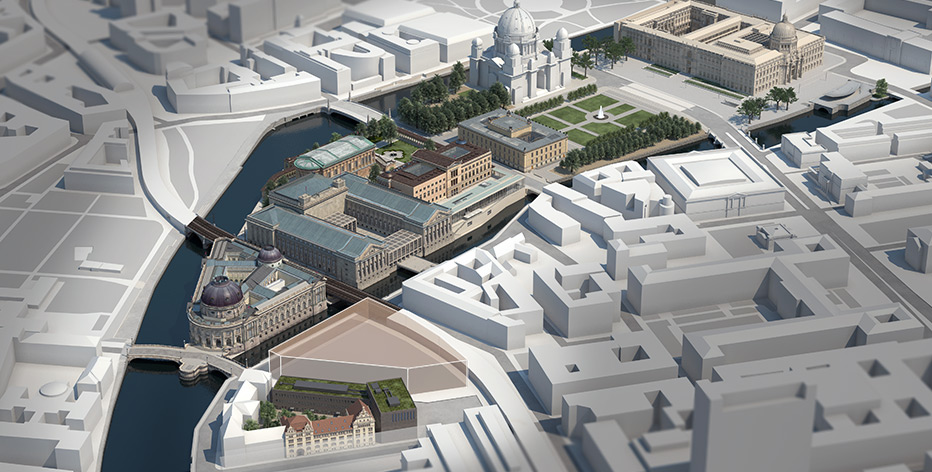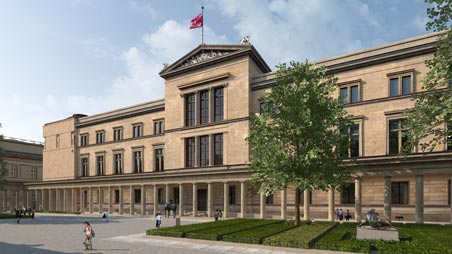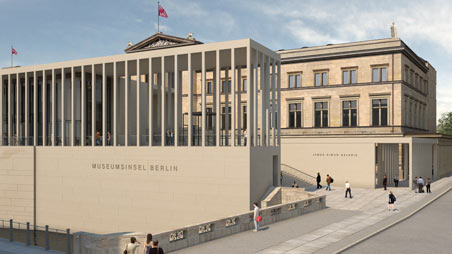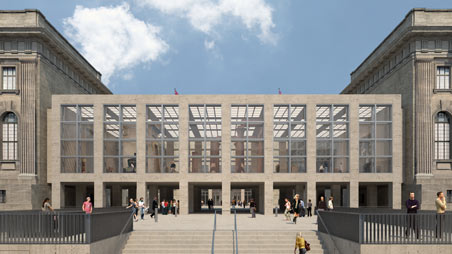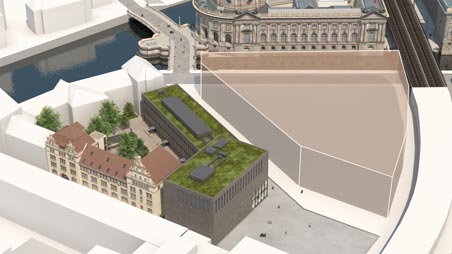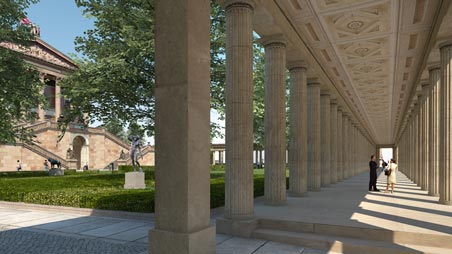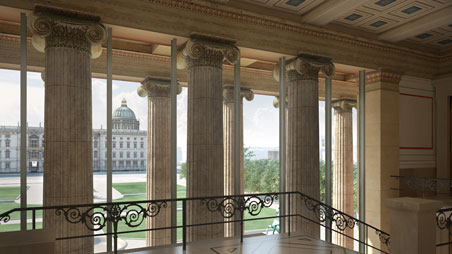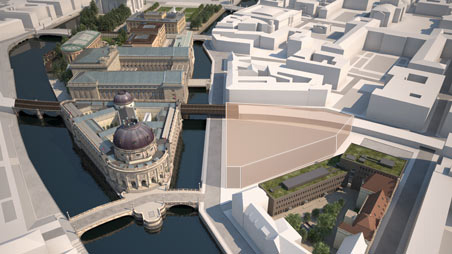The Museum Island Master Plan: A Projection into the Future
The Museum Island Berlin was included in the UNESCO World Heritage in 1999. Being one of Berlin’s main attractions, it is visited by about three million people each year. These two aspects have been taken into account in the Museum Island Master Plan which was agreed upon in 1999. The island, which is located on the Spree River and measures about one square kilometer will be developed into a modern museum complex. At the same time, the unique, historically grown ensemble of architecture and art will be preserved. All measures are being taken in close coordination with the authorities in charge of the protection of historic buildings and monuments. It is expected that the Museum Island Berlin will be completed in 2025/26 in accordance with the Master Plan.
